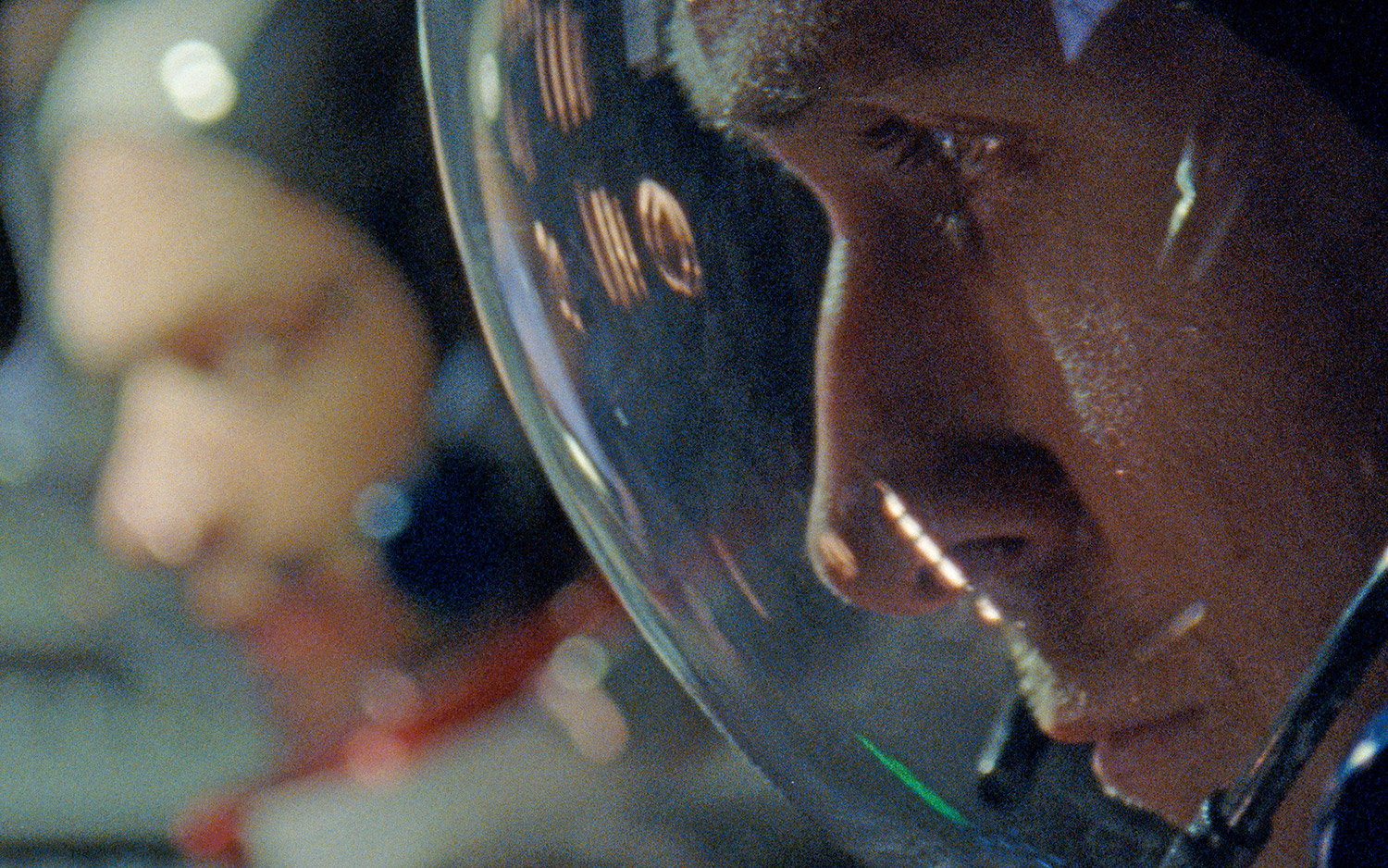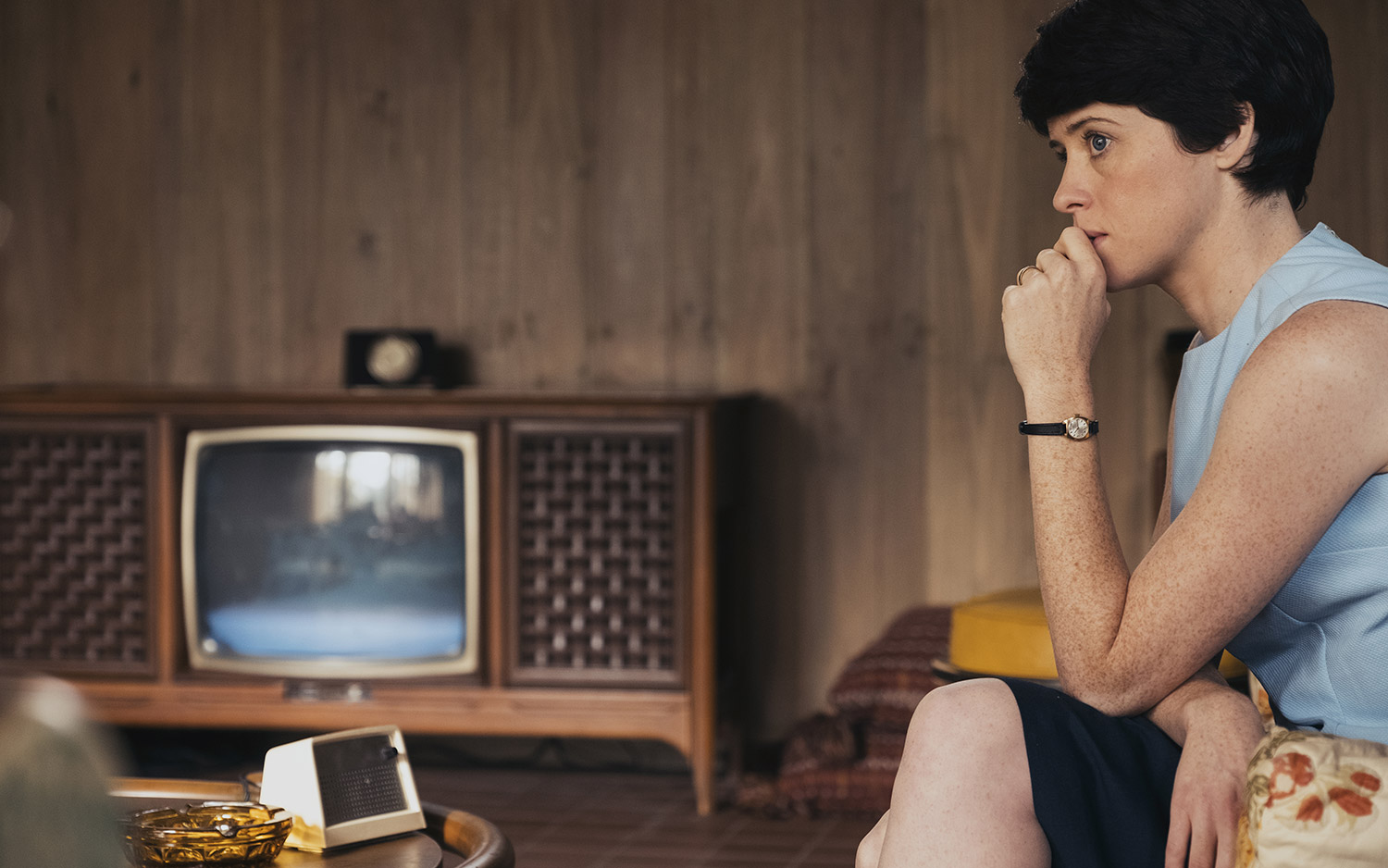'First Man' Offers an Emotional Account of Neil Armstrong's Life (Film Review)
Warning: This review contains minor spoilers for "First Man."
Not since 1995 and the release of Ron Howard's "Apollo 13" have cinema-going space fans been as excited as they are now, with the general release of Damien Chazelle's much anticipated Neil Armstrong biopic "First Man" just days away. Scheduled to open on Oct. 12, the story was adapted by Josh Singer from the book "First Man: The Life of Neil A. Armstrong" by two-time Pulitzer Prize nominee James R. Hansen.
Ryan Gosling stars as Armstrong; following his sublime performance in "Blade Runner 2049," his masterful, understated portrayal in that movie showed he was made for this role. Emmy award-winning actress Claire Foy plays his wife, Janet, and an impressive supporting cast includes Kyle Chandler as NASA's first chief astronaut, Deke Slayton; Jason Clarke as Apollo 1 astronaut Ed White; and Pablo Schreiber as Apollo 13 commander Jim Lovell.
We won't focus on the historical accuracy of the movie here (Space.com will have another story on that coming very soon). However, we will simply say that it's handled very well. Chazelle once again focuses on one of his favorite cinematic themes: obsession. Armstrong was unwavering in his devotion to each and every mission, and his supremely focused and single-minded, almost robot-like composure saved his life on more than one occasion. [Photos: Neil Armstrong - American Icon Remembered]
The movie starts with one such example of this: Armstrong's sixth X-15 test flight on April 20, 1962, and an incident that has gone down in folklore with test pilots at Edwards Air Force Base in California. It's a thrilling, beautifully filmed opening set piece that sets the tone straightaway.
The instrumental score by Justin Hurwitz – on more than one occasion – was reminiscent of the wonderful soundtrack by Philip Sheppard to the series "Moon Machines," and like that underrated TV show, the music is utilized to great effect in this movie.
In addition to using Hurwitz once again (their fourth collaboration), Chazelle has also opted to again employ other members of his Academy Award-winning team, including cinematographer Linus Sandgren, and the result is as far away from Tom Hanks in space as you can imagine.
The portrayal of Armstrong's Gemini 8 mission stylishly illustrates this. Throughout the movie, a grainy visual texture is used to give the picture more personality and history. There's even a documentary feel to the camera movement. The dark, empty void of space is also something that's emphasized by having the Gemini spacecraft's interior lit a way that really gives it a moody, dramatic quality compared to the much more clinical look and feel of "Apollo 13." The blackness of space is matched by the silence of space — Chazelle's way of reminding us that less is often so much more.
Breaking space news, the latest updates on rocket launches, skywatching events and more!
The action is restricted almost entirely to the point of view of the astronauts themselves; the movie shies away from exterior and panoramic shots that the astronauts weren't privy to. The terrifying things they see and hear during their missions and their reactions are captured to great effect, with little more than good acting and good photography. Exposition and extraneous dialogue aren't required — or used.
There has been talk that "First Man" might be a contender for an award as the season ends — and quite rightly so. However, even though Gosling was born to play this role, Foy is also outstanding as Armstrong's wife: She is considerably more outgoing with her emotions, and there is surely a nomination for best supporting actress on the horizon for her.
As the story develops, we are drawn deeper into Armstrong's psyche, for this is not a story about the U.S. space program or even one particular mission; this is a story about just one man and his enviable ability to compartmentalize his fear and "maintain an even strain," even when death may seem to be no more than one minor mistake away. A wonderfully well-written scene where Janet demands that Neil tell his children there is a possibility he might not come back from the Apollo 11 mission illustrates the downside of his unique ability: The only way he seems to be able to deal with it is to treat it like he's taking questions at a press conference.
Armstrong is a man who has been forced to deal with a lot of death, from within his own family to his fellow pilots. In the car following the wake for astronaut Theodore Freeman, Janet explains to Ed White and his wife Pat (Olivia Hamilton) that, over the course of one year at Edwards, they had to mourn the loss of four of their friends. "We got really good at funerals that year," she says.
Armstrong's relationship with the other Gemini astronauts is touched upon, but not overstated. His friendship with Ed White, for example, and the awful accident with the fatal Apollo 1 fire meant Armstrong had more tragedy to deal with. Any ordinary man might have buckled after that, and yet he continued to put himself in the most dangerous predicaments possible. Thankfully, Buzz Aldrin's issues with not being first is left behind, and rightly so — it would have detracted from the story — and Corey Stoll gives a performance as Aldrin that does its job. In such stark contrast, Aldrin understood the historical significance of what was going to happen, but to Armstrong, it was simply a mission objective.
When the film premiered at the Venice Film Festival on Aug. 29, Gosling said in an interview with CNN, "I think Neil was extremely humble, as were many of these astronauts, and time and time again he deferred the focus from himself to the 400,000 people who made the mission possible. I might have cognitive bias, [but] I don't think that Neil viewed himself as an American hero. From my interviews with his family and people that knew him, it was quite the opposite. And we wanted the film to reflect Neil."
Even knowing how the story ends doesn't make their flights less thrilling or failures less frustrating. You'll be glued to the screen from start to finish, so we would highly recommend you watch this on the biggest screen possible – an IMAX. The unpolished realism of the cinematography combined with the superlative sound design truly put you inside the violently shaking cockpit, sharing the same terrifying experience that Armstrong seemed so well able to just take in his stride.
Follow us @Spacedotcom, Facebook and Google+. Original article on Space.com.

When Scott's application to the NASA astronaut training program was turned down, he was naturally upset...as any 6-year-old boy would be. He chose instead to write as much as he possibly could about science, technology and space exploration. He graduated from The University of Coventry and received his training on Fleet Street in London. He still hopes to be the first journalist in space.


